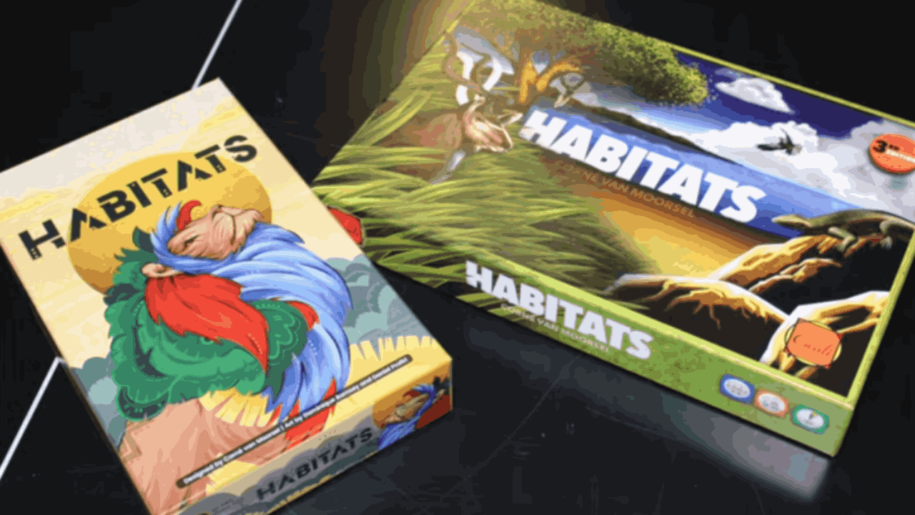
There has been a huge rise in “personal” tile-laying games over the last ten years. They all function much in the same way: select your tile from a group using a method, then use it to construct a custom display area.
2017 saw Kingdomino win the Spiel des Jahres; 2018 saw Azul win; 2020 saw Nova Luna nominated; and 2021 saw Cascadia win. Before all of that, in 2016, there were Habitats; in fact, a lot of Nova Luna’s design is taken from Habitats. However, allplay has just released a gorgeous new edition of Habitats. In 2023, how does it compare to its offspring? Come with me while we examine!
Setup
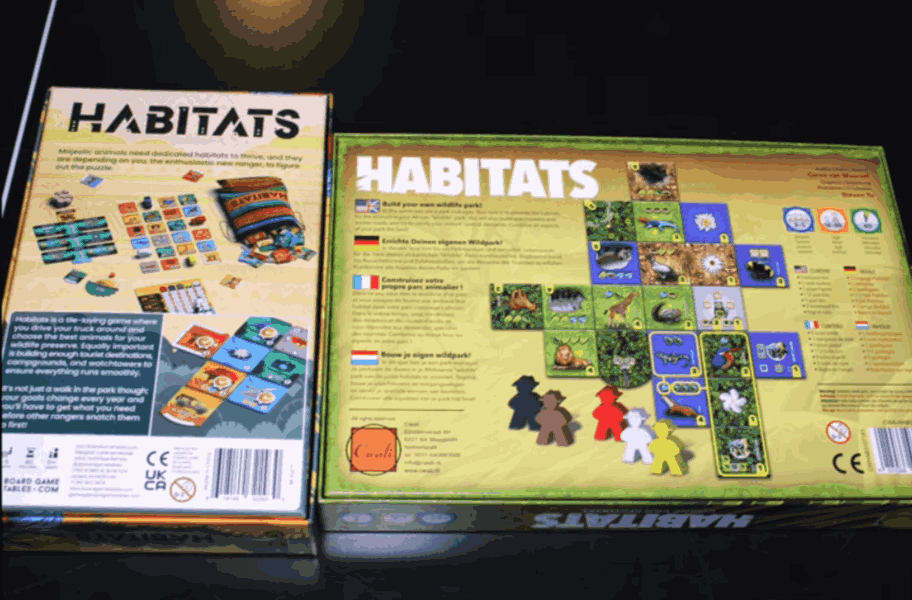
Depending on the number of players, different setups are required. Each scoring objective tree has a helpful prompt that indicates where to arrange the trucks and tiles. Select and arrange six end-of-round scoring tiles next to this.
A beginning tile that matches the color of the player’s vehicle will be given to them. The round tracker marker, which they will be responsible for, is also required for the opening player. You are now prepared to play if you add scoring tokens to a pile close by.
Gameplay
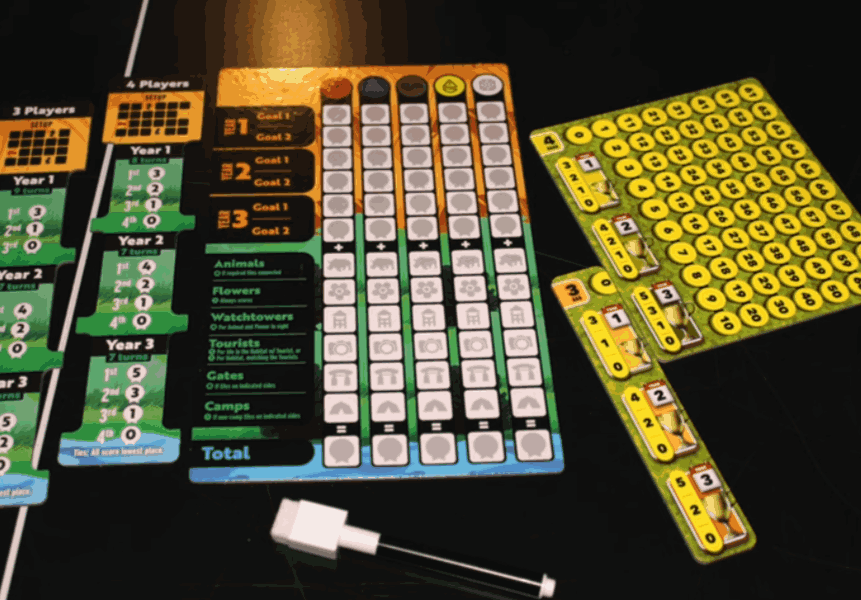
The game Habitats is a tile-laying zoo construction game. On your turn, move your Zookeeper token to a new Tile Market space, take a tile, and add it to your zoo orthogonally.
There are four tile types:
Your pals are animals and flowers. They also need nearby tiles to be happy. The typical tile kinds are:
Areas: Plains, Forest, Drylands, Lakes
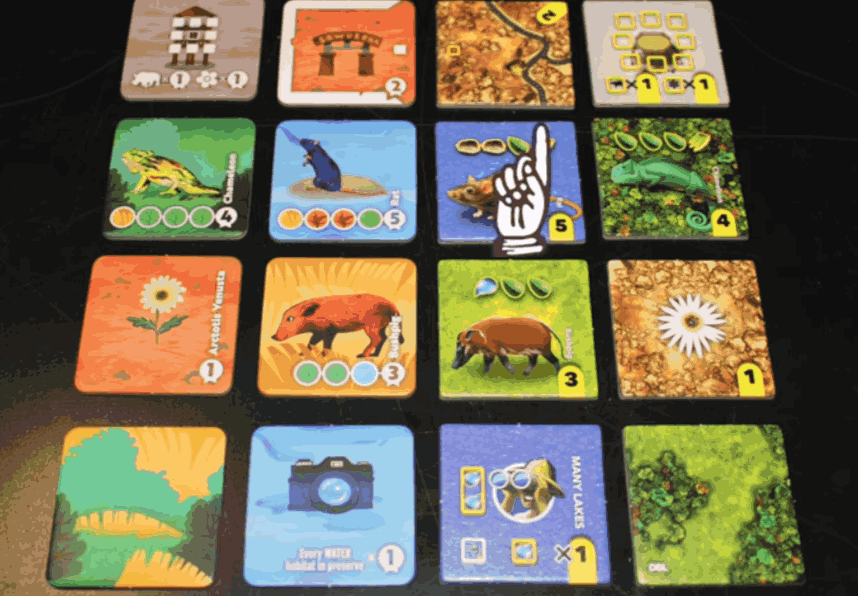
Animals will have marks above their heads indicating which and how many nearby habitats they need. Flowers are always complete (and earn one point), and bees need flowers nearby.
More than one symbol means an animal needs both tiles in a nearby region. This means they can be connected (a block of two water tiles can satisfy an animal with two water symbols) or not. The game encourages flipping tiles upside-down until they’re satisfied, then flipping them right-side up, which is good but messy at the end. I track myself.
- Roads fascinate: If you connect their tiles to tiles at the margins (yellow boxes), they score points. Access roads prevent other edges from connecting to tiles! Your starting tile works similarly, but it’s infinitely long, unlike these road tiles. Roads represent their tile kind, like your initial tile. An incomplete road tile ends the game with 0 points.
- Watchtowers only watch animals: The ones with the line going off the board go on forever, while others simply look at adjacent creatures, but they all share the same idea. You score if the watchtower sees finished animal shelters. When placed, a watchtower can be rotated, but its line of sight terminates at another. If it sees unfinished animals, it gains nothing. Make animals happy.
I suppose these folks are merely visiting the park. In your park-building, you’ll encounter two categories of tourists:
- “Big” Tourists: These tourists are nuts about the park area on their tile. In their connected region, they’ll earn you one point for each tile of that type (excluding their tile). You should use this tile for large areas of a specific sort.
- “Many”: tourists value quantity over quality. You’ll get a point for each kind of region on their tile. If you have Many Drylands tourism, you should avoid linking many drylands because one large region is one giant point. That scoring doesn’t include their tile or area.
- Tourists Count: As the tile type they appear to be for animal habitats, therefore you can use it to help animals. However, a watchtower sighting a tourist doesn’t receive extra points; you didn’t pay to go to the zoo to see other people.
- Those are the Tile Types: How you receive the tiles is also intriguing. You see your zookeeper token lying down? Check their orientation. They can turn left, right, or straight ahead and take the next tile. Slithering about the tile market is how your zookeepers move. You can skip over zookeepers in your way! Kinda hop. You can move backward and take a tile if none are available in any of the three directions by chance. In that case only.
After taking a tile, refill from stacks. First-player replenish from pre-filled stacks. You enter the last year when one stack is gone. After your turn, everyone else plays, then year-end scoring.
- Look at goals during year-end scoring
- Only score the two applicable to your year. Goals are
Which Park has the Most of One Terrain
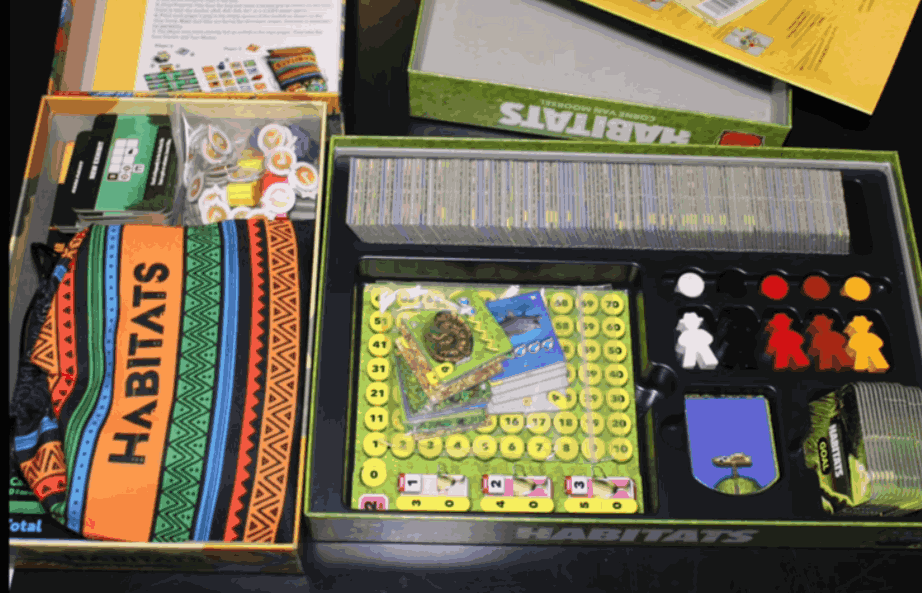
- Many Areas: Which park has the most diverse terrain?
- Long Park: Which park has the longest tile row? The park is long.
- Diagonally Long Park: Which park has the longest tile diagonal?
- Landscape Types: Which park has the most of each? If a tie occurs, count each landscape type’s sets.
- Flower Diversity: Which park has the greatest varieties? Count flowers if tied.
Most Compact Park? Basically, Who has the Most Tiles?
Keep It Close: Which park is near the entrance? Find the tile farthest from your entrance. Get points for the least number of tiles between that tile and your entrance tile.
What park has all tiles nearest to a road tile? Same as Keep it Close, except choose the tile farthest from any road tile. The smallest number receives points.
Any tie exceeding my standards results in the tied players receiving the points for their lowest rank. Despite the odd wording, if three persons tie for second place, they’ll finish second, third, and fourth. They all receive fourth-place points.
Play continues until the game ends. I usually score all animals, watchtowers, tourists, and roads at the end of the game. After that, the highest scorer wins!
Player Count Differences
At greater player counts, tile market competition increases. If you can’t find anything, follow another player around—they’ll leave additional tiles you can take. High player counts cause increased entropy in the player market because so many players are moving around. Otherwise, nothing changes except the scoreboard includes additional slots for year-end goals, so you can gain minor points from them (whereas if you’re not first in a two-player game, you score nothing). No preference, but it plays faster at 2–3 players than 4–5 (as most games do). Fast players can finish a two-player game in 20–30 minutes.
Strategy
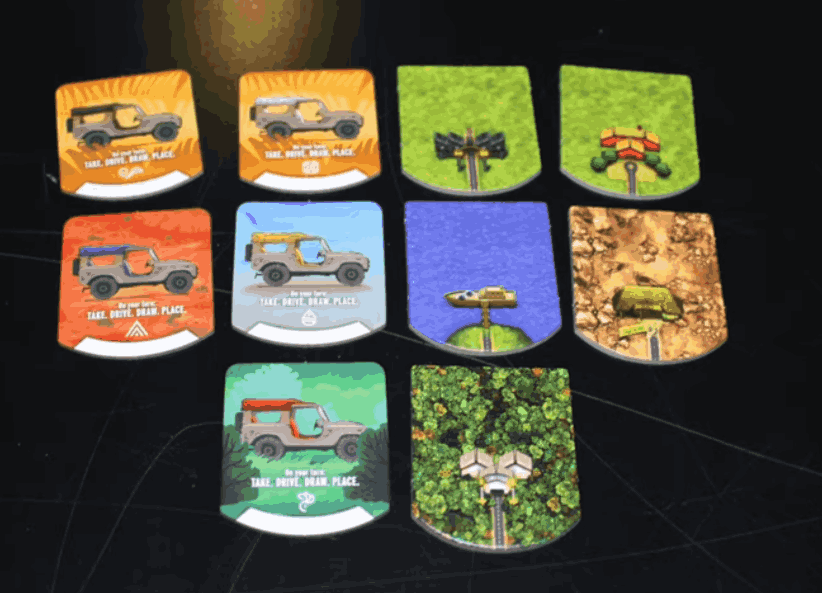
A good Watchtower placement is smart. In one game, I constructed a huge park with watchtowers aiming at each other. Scored 7 points for each tower, 14 total. Huge swing. Watch how to use them to benefit your park, especially if Long Park/Diagonally Long Park goal tiles are in play.
Don’t worry about finishing animals in three turns or less. Unless you need animals for watchtowers or receive a fortuitous draw, finish what you have. It’s possible, so think about it.
- Don’t confuse Big and Many: Big desires a large region, while many seek numerous little, non-contiguous areas. It seems that Many is better in Hard Mode while Big is better in Normal. Your experience may differ.
- Taking flowers is usually fine: They’re cheap but may be placed anywhere. Using them to achieve habitat goals is usually wise.
- Although roads are good, don’t take too many: They’ll block access to parts of your park, making animal placement and scoring difficult. I recommend using them at your park’s perimeter for the Accessibility Goal.
- Watch the goals: These may not seem like many points, but Habitats games may be close, and a few additional points could win you the game. Additionally, it lets you switch play styles between games.
- Track your pets: The urge (and cognitive limit) to grab more animals rather than finish the ones you’ve taken is real. You may miss complete habitats just because you forgot, not because of a terrible approach.
- Unable to locate what you want: Follow another player. Players leave new tiles in the tile market, so take what you need. That way, you may receive more of what you want.
- Plan: People can’t aggressively interrupt your plans (unless they serendipitously line up enough people to join your firm), thus you can predict what will be accessible a few turns in advance.
Comments from other Opinionated Gamers
Mark Jackson: The 3rd edition Habitats rules require two goals every “year,” which we appreciate!
Tery: For the reasons James Nathan stated, I enjoy Habitats. Initially, I had low expectations because the artwork and adorable things (an enhanced copy with little ceramic animals) seemed too light, but I was mistaken. The game is brief yet filled with content. Optimizing your path and figuring out your alternatives dependent on other players is a fun puzzle. It is easy to teach, works well with any number of players, and plays quickly with more players. I have the 2nd edition, but we recently tested Mark’s 3rd edition rule and liked it.
- Dale: I love the path-solving puzzle. Yes, I call the tiles “pooped out”
Dan Blum: Habitats is fun, but I like it with fewer players since path optimization is more fascinating. Destroying your path reduces your optimization options. I played Morisi, Netzwerk, and Isi but didn’t like them. For years, I owned High Hand, Switch’s proprietary version, but never played it.
Conclusion
The habitats are great! Has something for everyone. It’s a simple tile-laying game, but its premise and mechanics make it compelling. It’s more complicated than Kingdomino, but it’s a terrific follow-up to its basic tile-laying mechanic (unlike Queendomino, which I think makes the game more complicated without improving playability, but that’s another review).
I just have one problem about Cwali: their games are hard to get off Kickstarter in the US. I adore almost every Cwali I’ve played (which is just this and Factory Funner), so I’m always disappointed when I say, “Either go back in time a year and back it on Kickstarter or hope for a new edition”. If you’re looking for a fun animal game with cool tile-laying mechanics and a wider animal selection than Bärenpark, Habitats is a great choice. I hope they can partner with a stateside publisher to expand their distribution.
